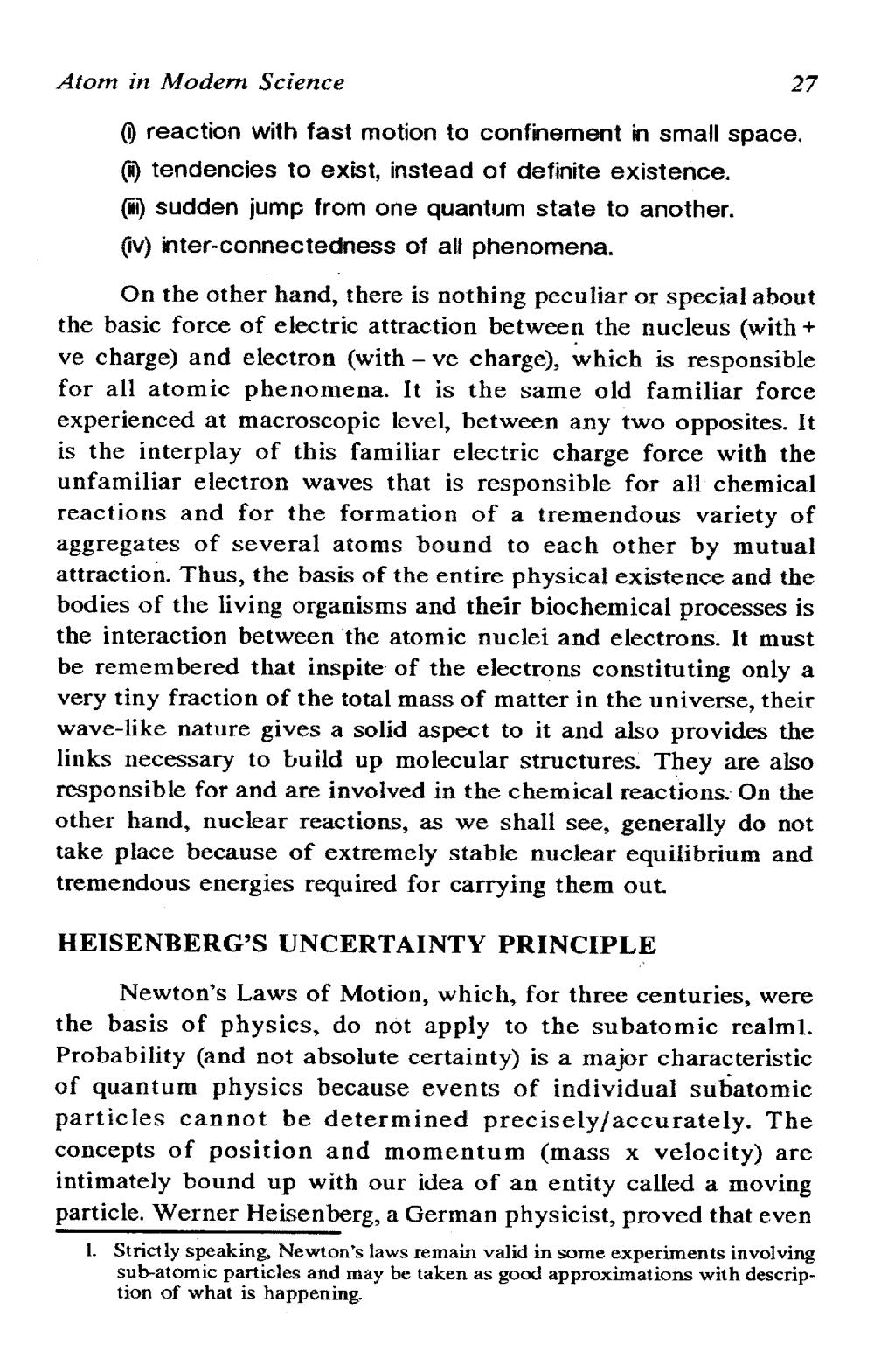________________
27
Atom in Modern Science
0 reaction with fast motion to confinement in small space. m) tendencies to exist, instead of definite existence. (i) sudden jump from one quantum state to another. (iv) inter-connectedness of all phenomena.
On the other hand, there is nothing peculiar or special about the basic force of electric attraction between the nucleus (with + ve charge) and electron (with - ve charge), which is responsible for all atomic phenomena. It is the same old familiar force experienced at macroscopic level, between any two opposites. It is the interplay of this familiar electric charge force with the unfamiliar electron waves that is responsible for all chemical reactions and for the formation of a tremendous variety of aggregates of several atoms bound to each other by mutual attraction. Thus, the basis of the entire physical existence and the bodies of the living organisms and their biochemical processes is the interaction between the atomic nuclei and electrons. It must be remembered that inspite of the electrons constituting only a very tiny fraction of the total mass of matter in the universe, their wave-like nature gives a solid aspect to it and also provides the links necessary to build up molecular structures. They are also responsible for and are involved in the chemical reactions. On the other hand, nuclear reactions, as we shall see, generally do not take place because of extremely stable nuclear equilibrium and tremendous energies required for carrying them out.
HEISENBERG'S UNCERTAINTY PRINCIPLE
Newton's Laws of Motion, which, for three centuries, were the basis of physics, do not apply to the subatomic realml. Probability (and not absolute certainty) is a major characteristic of quantum physics because events of individual subatomic particles cannot be determined precisely/accurately. The concepts of position and momentum (mass x velocity) are intimately bound up with our idea of an entity called a moving particle. Werner Heisenberg, a German physicist, proved that even 1. Strictly speaking, Newton's laws remain valid in some experiments involving
sub-atomic particles and may be taken as good approximations with description of what is happening.




